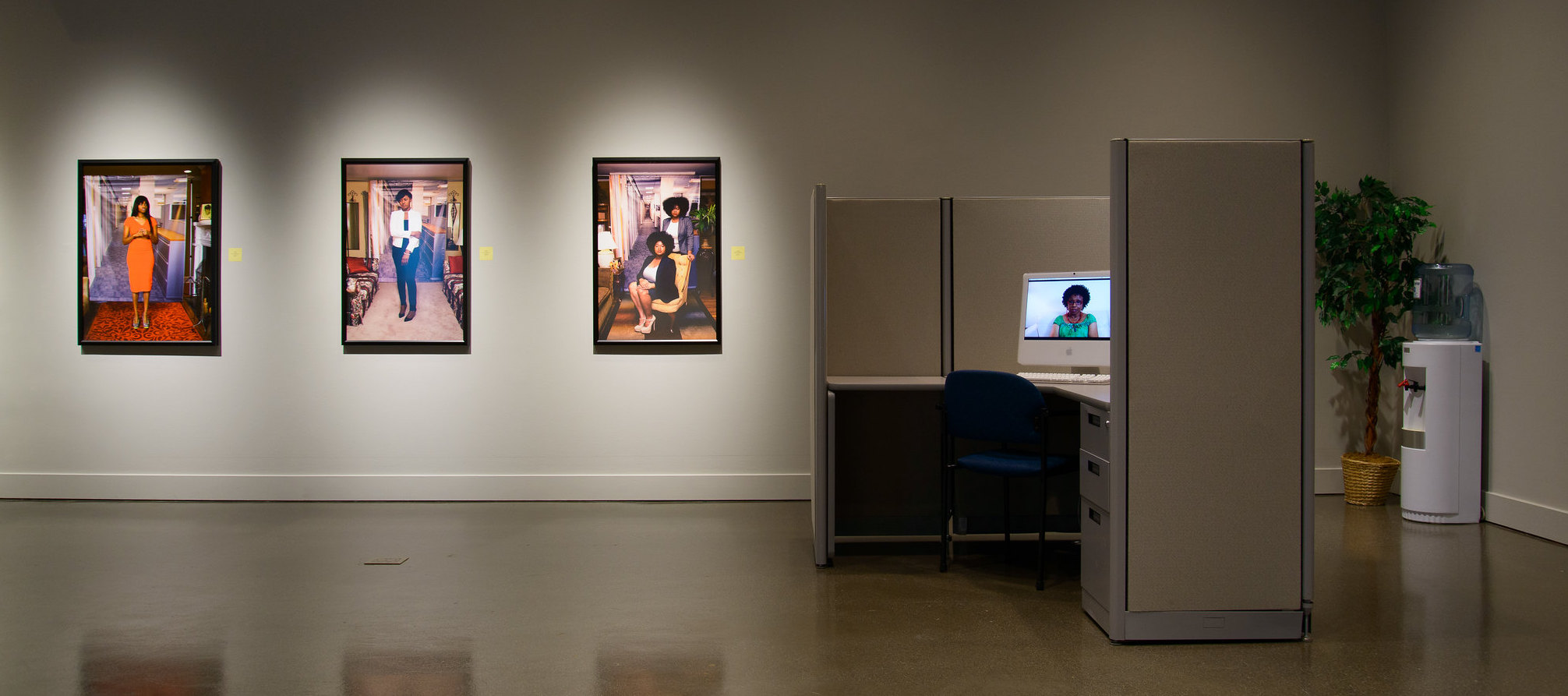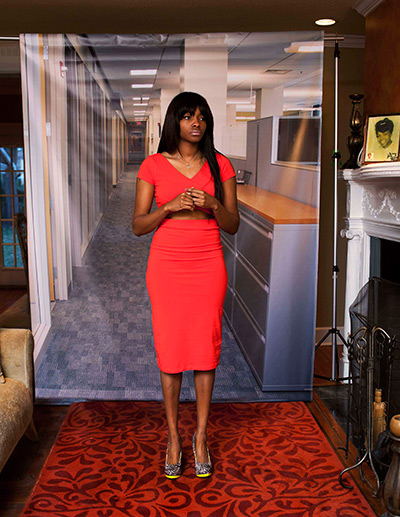Endia Beal is acutely aware of the under-representation of minority stories in contemporary art circles; it is even more rare to find stories of black women working within the structures of corporate America. In her recent video, “The Office,” Beal relates an experience that is personal, yet universal to many women of color working within corporate confines. She says: “My vision is to document the lives of the invisible. The invisible are those whose voices are drowned by society’s attempts to maintain normalcy through figurative castration of marginalized groups. As a minority, I too share the mark of the unknown. My artistic journey lends itself to unorthodox circumstances where I ask questions like, “What’s really going on here?””
Endia Beal is an North Carolina based artist, educator and activist known for her photographic narratives and video testimonies that examine the personal, yet contemporary stories of marginalized communities and individuals. One of four women to participate in ArtTable (a program designed to promote women in the visual arts, Beal was part of the curatorial team for the Andy Warhol exhibit at George Washington University. Using this platform to advocate for minority opportunities in the arts, Beal devised creative marketing strategies to “redefine the way minority communities interact with art.” Continuing this practice today, Beal currently serves as the Interim Director of Diggs Gallery at Winston-Salem State University. Diggs Gallery offers: “one of the largest exhibition spaces dedicated to the arts of Africa and the African Diaspora in North Carolina. Exhibitions, publications and programs address a broad range of artistic expression, with special concentration on African-American and regional art.”
– Mary Anne Redding
Curator


Artist’s statement
“From the intimate portraits of Julia Margret Cameron to the street scenes of Helen Levitt, I knew that my passion lay within art. As the middle child growing up in a single parent home, my mother recalls that I had a certain artistic “knack.” That interest became a cathartic vehicle for self-expression after experiencing an immense tragedy where a close friend was the victim of homicide at the age of seventeen. I had not pursued art in high school even in its most primitive nature; however, I found comfort in applying unspoken emotions onto canvas and pursued my passion within academia.
“Completing studio art and art history degrees perfected my technical skills with a solid appreciation for the profession. However, it was not until traveling to Europe, that I observed a global void within the translation of the minority experience. I acknowledged the African art confiscated upon conquests and the Egyptian influence of the obelisk at the Vatican; yet as a black female, discovering traces of my heritage amongst the classic works was futile.
“Likewise, I witnessed the under representation of contemporary minority stories within art circles. Rare is it to find pieces unveiling the stories of black women working within business. In my most recent video, entitled “The Office,” I speak about an experience that is personal, yet universal to many women of color working within the corporate space. A rumor circulated at work that my thick, kinky Afro and ethnic hairstyles fascinated my white male colleagues. These men were curious about how my hair felt and wanted to touch it. I developed a piece that explores the thin line between personal and private within the workspace. With the melody of spoken word, I transform into a voyeuristic actress fulfilling the desires of my male colleagues. However, the viewer is left with their imaginations as the tentative voices of the men discuss conflicted feelings of touching me within a very corporate office setting. These stories should be told.
“My vision is to document the lives of the invisible. The invisible are those whose voices are drowned by society’s attempts to maintain normalcy through figurative castration of marginalized groups. As a minority, I too share the mark of the unknown. My artistic journey lends itself to unorthodox circumstances where I ask questions like, “What’s really going on here?” I will show others through the energy of my work that coming from a place that is foreign to many does not mean you cannot radiate.”
– Endia Beal
Additional resources
- Flickr-Installation images
- Young, Black, Female and Envisioning Corporate Life
- Endia Beal
- Gallery Guide on Issuu
